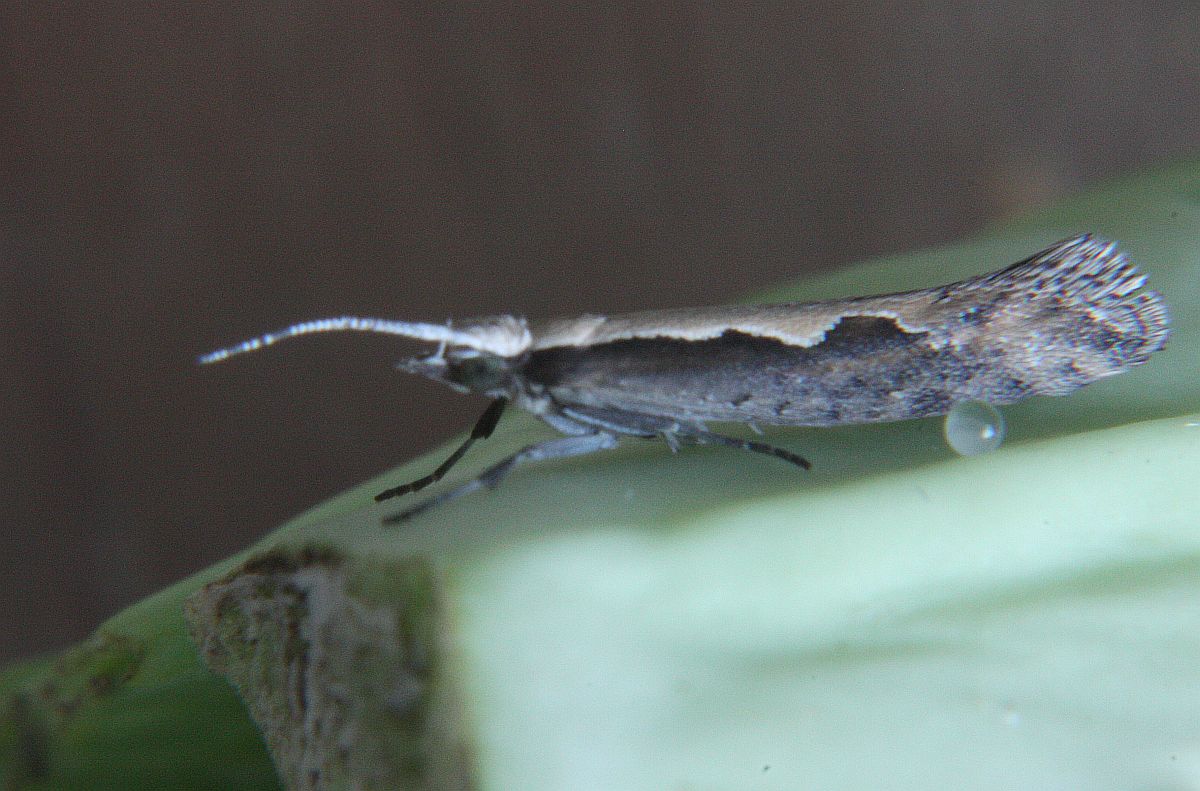March 25
2016 March 25
Libby Avis sends photographs of a moth and two beetles from Alberni. The moth is Semioscopis sp. Libby says there are three possible species, and that they require dissection to be sure of the species. Jeremy Tatum notes that taxonomy of all organisms seems to change at a bewildering rate, and that this and similar moths, including the familiar Depressaria pastinacella and Agonopterix alstroemeriana, were formerly included in the Family Oecophoridae, but the group has now been given a new Family name, Depressariidae.
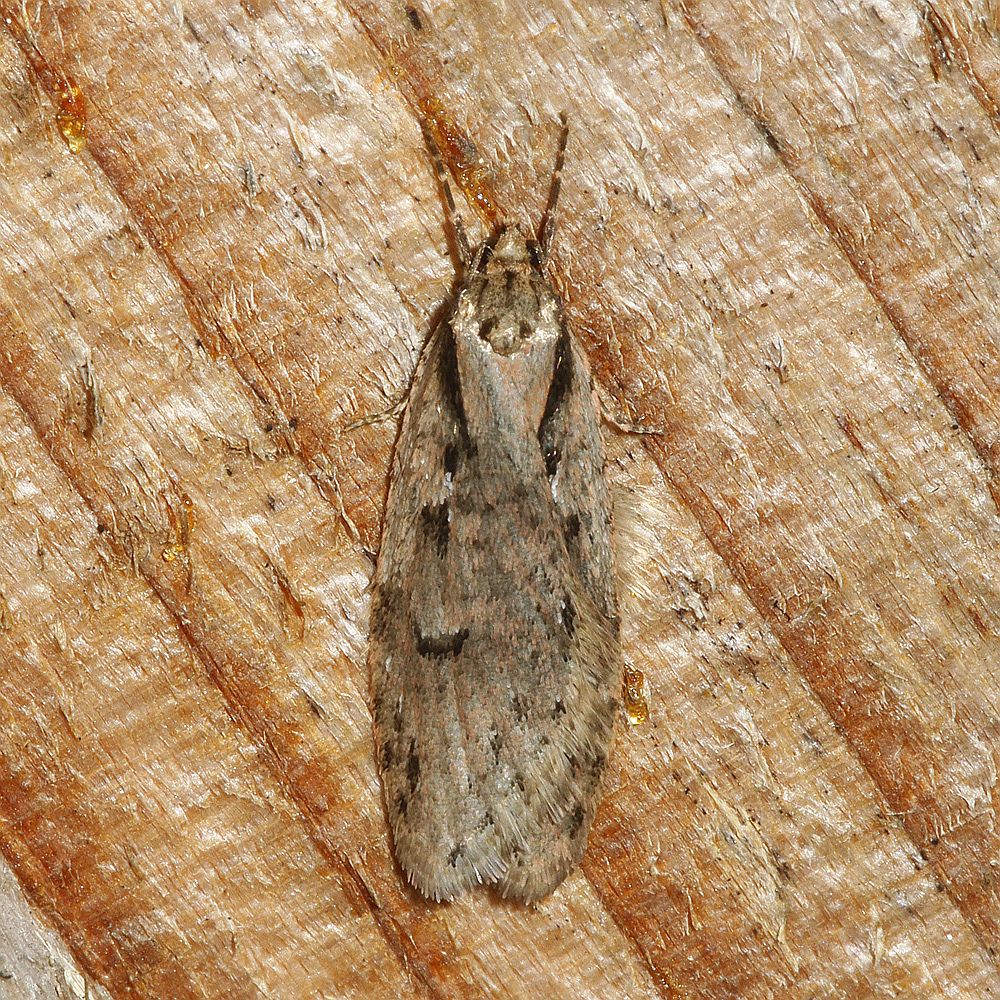
 Semioscopus sp. (Lep.: Depressariidae) Libby Avis
Semioscopus sp. (Lep.: Depressariidae) Libby AvisLibby writes that the next image is Rathvon’s Ladybeetle, found on March 20 at the McLean Hill. She writes: It’s pretty big for a ladybird – this one was 12 mm. [Jeremy comments: Have a look at a ruler – you’ll agree that that’s large!] Libby continues: It’s been reported from elsewhere on the island, but it’s the first time we’ve seen it in the Alberni valley.
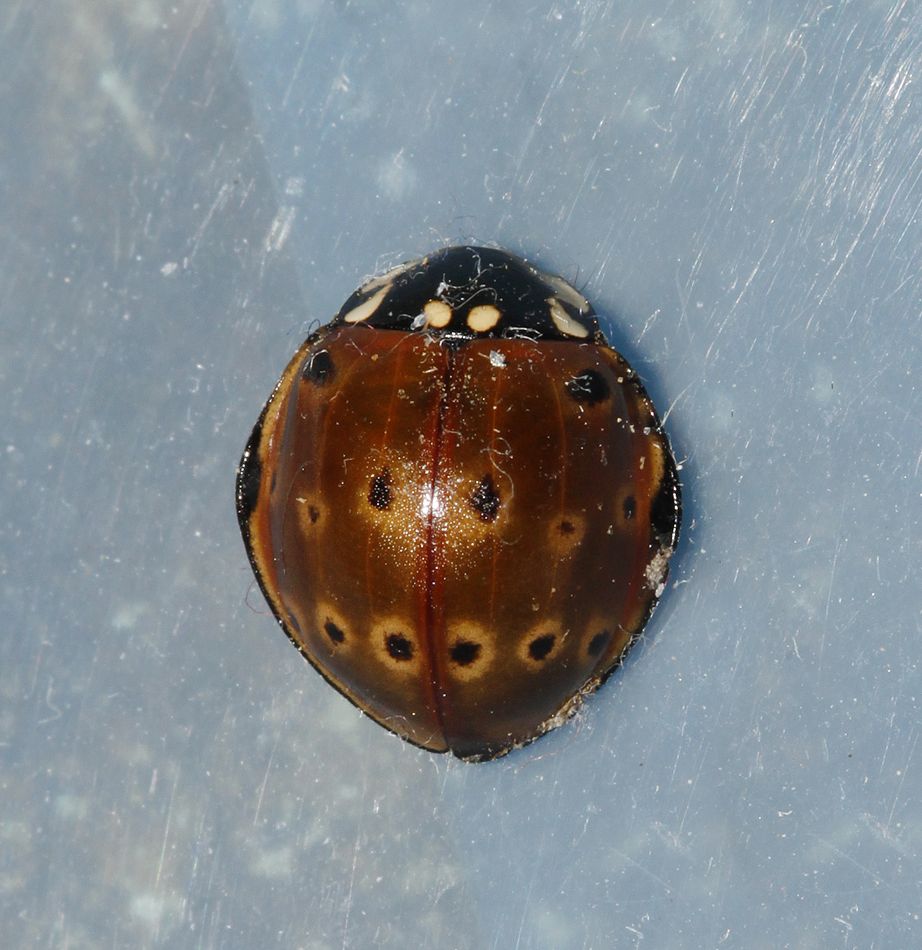
 Anatis rathvoni (Col.: Coccinellidae) Libby Avis
Anatis rathvoni (Col.: Coccinellidae) Libby AvisLibby’s third photograph is Thanatophilus lapponicus, the Northern Carrion Beetle, found at Rathtrevor Provincial Park on March 18th. She was able to identify this one thanks to Scott Gilmore’s photo on Bug Guide.
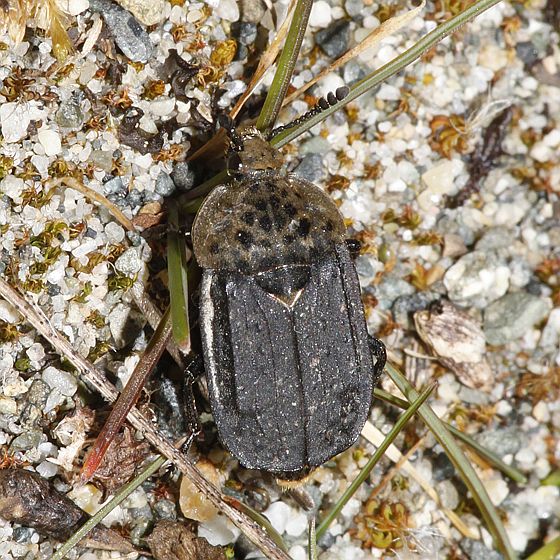
There have been few reports of butterflies, though Virginia Miller reported to Aziza Cooper that she had seen an anglewing (comma) in Goward Park, Cadboro Bay on March 16. Annie Pang saw two Cabbage Whites in Gorge Park Community Gardens on March 23. She closely watched and photographed the interesting behaviour of one of them, a female, which perched with raised abdomen. She writes: I am assuming that she has already laid her eggs and is trying to discourage further mating or is about to lay eggs. In this correct? Cris Guppy responds: The female was indeed trying to discourage males from mating with her. She raised her abdomen to release pheromones that ‘turn off’ the male’s interest in mating. I once had a laboratory colony of Cabbage Whites, and found that I if I had many females in a cage with males there would be a very low rate of mating. The first couple of females that mated would turn off all the rest of the males in the cage, and the rest of the females would not get mated with. All the Pieris and Pontia species do this (probably orangetips and marbles as well, but I am not sure).
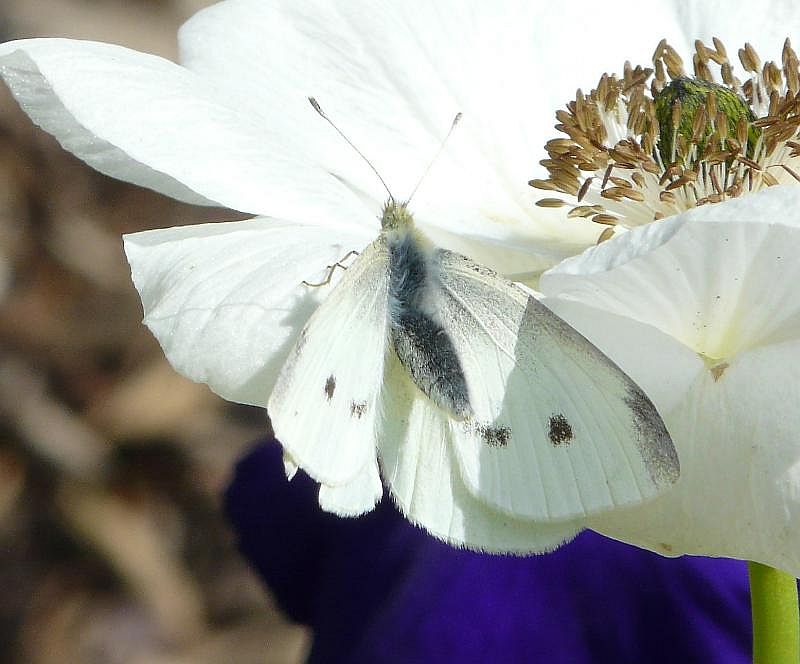
 Cabbage White Pieris rapae (Lep.: Pieridae) Annie Pang
Cabbage White Pieris rapae (Lep.: Pieridae) Annie Pang
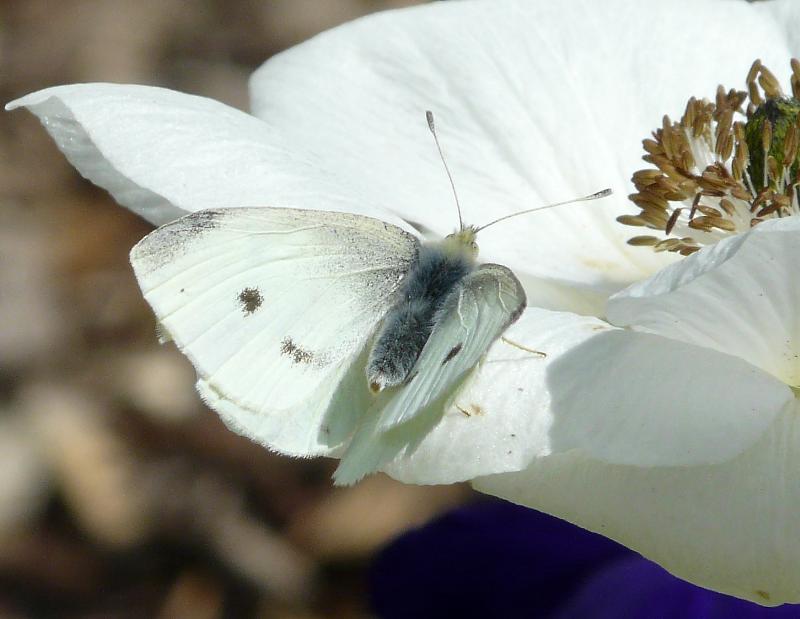
Jeremy Tatum writes that he has either been confined to the classroom (with some excellent students) or to bed (with a miserable cold), and hasn’t seen many invertebrates recently, though a bunch of organic Brussels sprouts from the grocery store produced a nice crop of Diamondback Moths. The first photograph is of one with unusual markings and colour, which had me guessing at first, but Eric LaGasa and I agree that it is probably a Diamondback Moth. The other two photographs show dorsal and lateral views of more typical individuals. The little blob of liquid near the third one is meconium from a newly-ecloded individual.
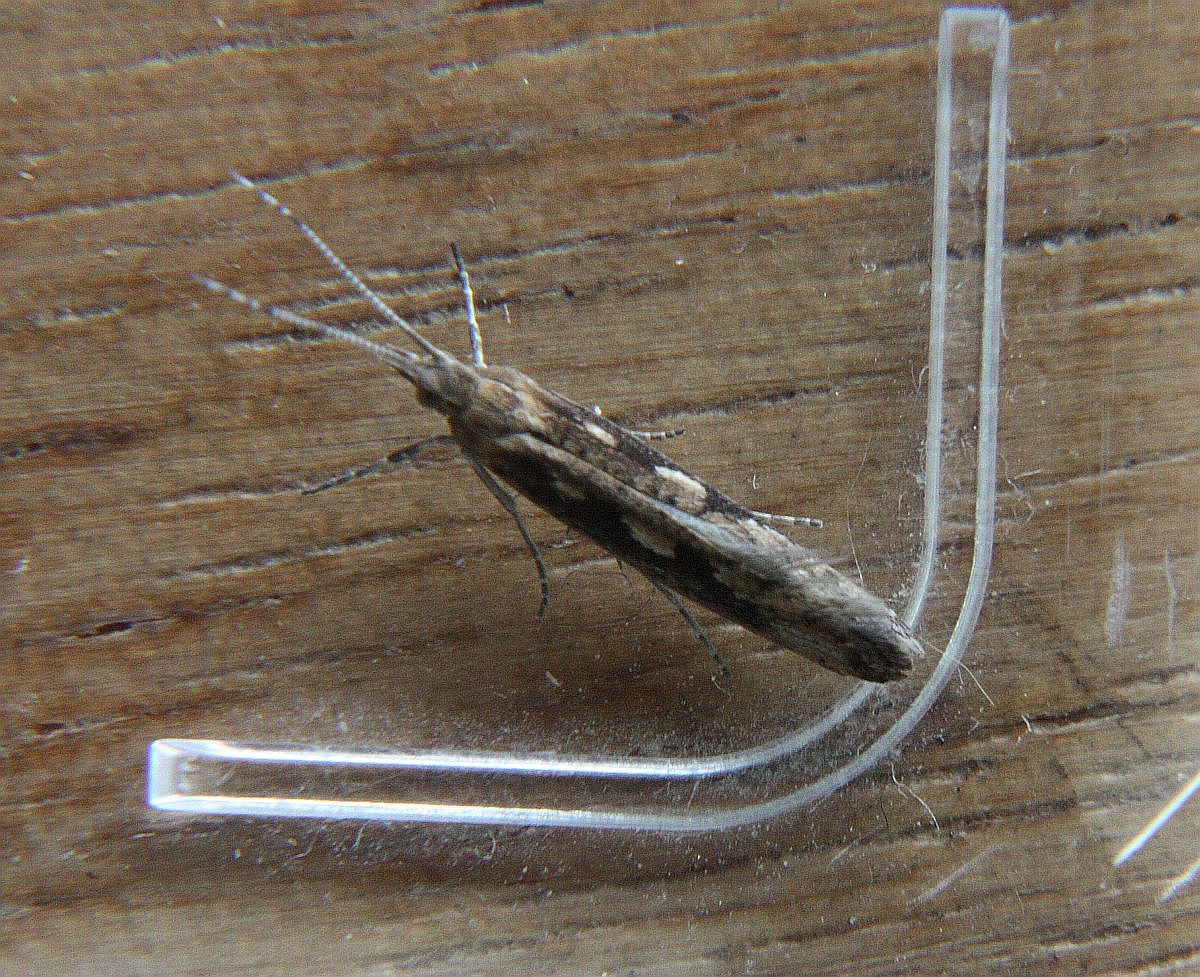
Plutella xylostella (Lep.: Plutellidae) Jeremy Tatum
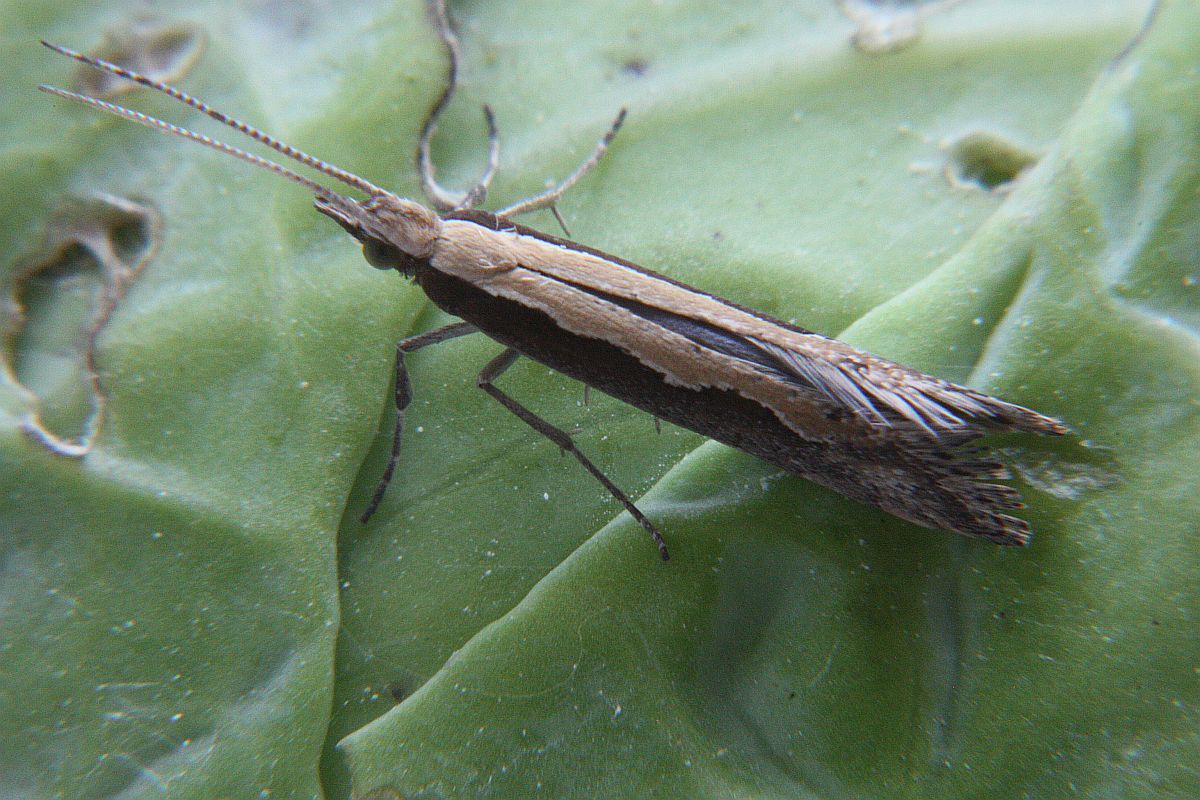
Plutella xylostella (Lep.: Plutellidae) Jeremy Tatum
